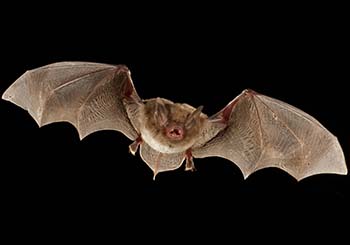(703) 881-3170
Southeastern Myotis Information
Southeastern Myotis Facts

Southeastern Myotis are endangered here in Virginia due to the loss of habitat from humans. These bats' habitat consists primarily of bottomland hardwood trees, or the trees that habitat swamplands that are present in southeastern Virginia. We are losing most of our swampland due to human encroachment and demolishment of human settlements, especially in the Norfolk area. Due to this, Virginia has been trying to protect these woodlands from future harm. The Southeastern Myotis tend to live near the base of the trees, usually Oaks or Cypress. However, they can also be found in caves, bridges, and homes near swampland. Due to their conservation status, it is unlawful in the United States to kill or relocate the Southeastern Myotis, and here at Xceptional Wildlife Removal, we offer special programs to keep these bats out of your home humanely, and with no harm to them.
Southeastern Myotis Characteristics
This small bat has a similar appearance to the Little Brown Bat, but the Southeastern Myotis has shorter fur which is thicker, and duller, and has the consistency of wool. These bats can reach up to 4 inches tall but are usually between 3.3-3.8 inches.
Southeastern Myotis Mating and Breeding
The breeding and mating habits of these bats are little known here in Virginia, and we have to base what we know on those from Florida. The mating season starts in Late Winter to Mid Spring. After birth, the females and pups will separate from the males to form nursing colonies. These colonies can usually be found in tree cavities or buildings near streams or ponds.
Southeastern Myotis Diet
The Southeastern Myotis' diet is not varied in the slightest. They almost exclusively eat Caddisflys a semi-aquatic insect and other similar species of the Trichoptera order. They have been spotted eating spiders, beetles, and fireflies.
